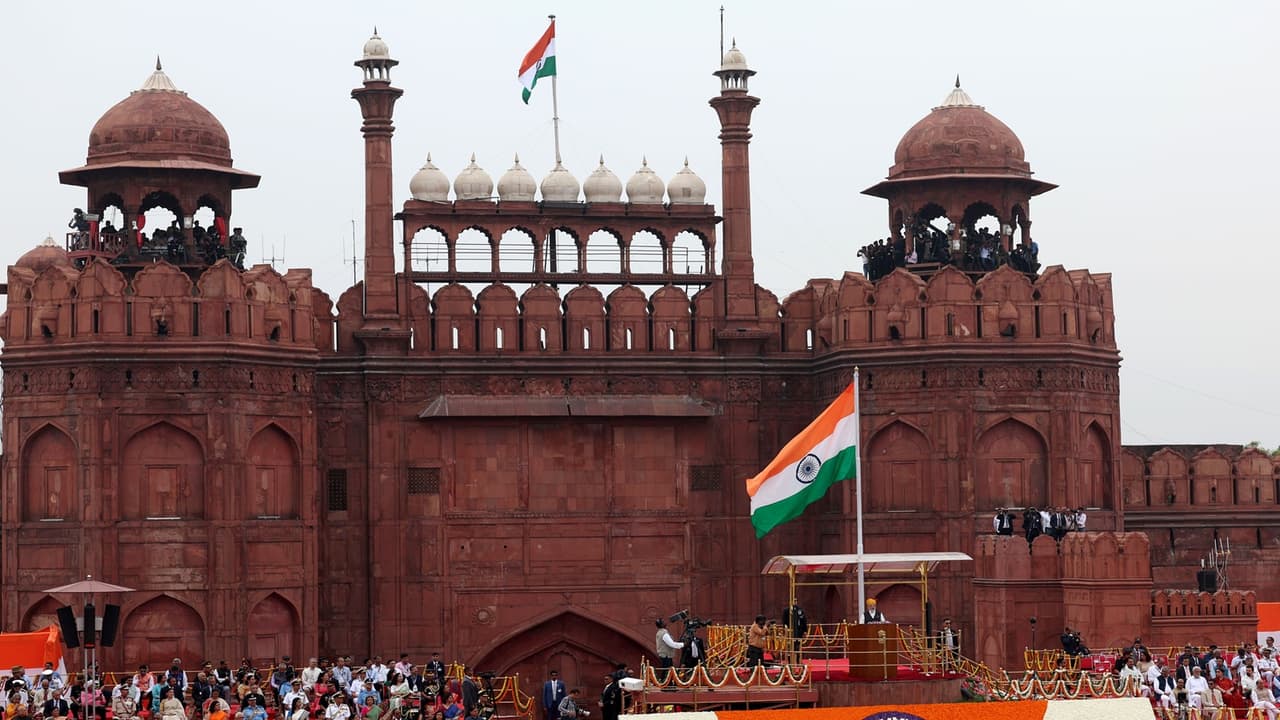Delhi Red Fort Facts: The Red Fort is not just a brick and stone structure, but a symbol of India’s pride and independence. Know 10 interesting facts about the blast at Red Fort in Delhi, which you probably did not know. History and untold stories from the time of Shahjahan till today.
Delhi Red Fort Interesting Facts: The recent explosion near the Red Fort of Delhi shook the capital. Security agencies have become alert as the angle of suicide attack has come to light in the initial investigation. Delhi Police, Jammu and Kashmir Police and other agencies are jointly investigating this matter in depth. Experts believe that terrorist organization Jaish-e-Mohammed may be behind this attack. This incident once again reminded that this fort is not just a structure of bricks and stones, but a symbol of Indian history, which has seen invasions, revolutions and cries of independence over the centuries. Today we will tell you 10 interesting facts related to this historical Red Fort, which you probably do not know.
This fort was white, not red
The Red Fort was not always red. When it was built by the Mughal emperor Shahjahan, it was made of white marble and lime. But when the stones started deteriorating with time, the British got it painted red. Since then it was named Red Fort.
Real name was ‘Qila-e-Mubarak’
The original name of the Red Fort was Qila-e-Mubarak, which means auspicious fort. Shahjahan used it as his royal residence. Later, when its red color became prominently visible, it came to be known as ‘Red Fort’.
Shahjahan got the construction done, it took 10 years
The construction of this huge fort started in 1638 and was completed after about 10 years in 1648. About Rs 1 crore was spent in making it, which was a huge amount at that time.
Walls high, so that the enemy cannot come near
The walls of the Red Fort were made very strong from security point of view. On the Yamuna river side the walls are 18 meters high, while on the city side they are up to 33 meters high. The circumference of the entire fort is approximately 2.5 kilometers long.
Kohinoor diamond is also related to this
The Diwan-e-Khas of the Red Fort once housed the royal throne of Shahjahan, in which the Kohinoor diamond was studded. After occupying India, the British looted it and took it to England.
Sikhs had liberated from Mughals
On March 11, 1783, Sikh warriors captured the Red Fort and liberated it from the Mughals. This incident is one of those moments in history when the fort witnessed the change of power with its own eyes.
Red Fort was the center of Shahjahanabad.
Shahjahan built a new city around the Red Fort, which was called ‘Shahjahanabad’. Today this area is known as ‘Old Delhi’.
The British destroyed many of its beautiful parts.
Many of the beautiful palaces and markets of the fort, such as the Mena Bazaar, were demolished during the British rule. The palaces here decorated with Turkish velvet and Chinese silk were destroyed. Despite this, the Red Fort still preserves its grandeur and historicity.
Read this also- Delhi Bomb Blast Case: Fuel oil, ammonium nitrate and detonator used
The echo of independence came from here
When India became independent on 15 August 1947, the country’s first Prime Minister Pandit Jawaharlal Nehru hoisted the tricolor from the ramparts of the Red Fort. Since then this tradition is followed every year on Independence Day.
Became a UNESCO World Heritage Site in 2007
The Red Fort was given the status of UNESCO World Heritage Site in the year 2007. Today it is not only the identity of Delhi, but has also become a symbol of India’s culture, bravery and freedom.
Today when the Red Fort is in the news again, it is important to remember that this fort is not just a structure of stones, but the story of our heritage, our identity and our freedom. It has been a symbol of India’s pride for centuries and will remain so in the times to come.
Read this also- Delhi Red Fort Blast: Did Dr. Omar commit suicide attack at the behest of Jaish?
